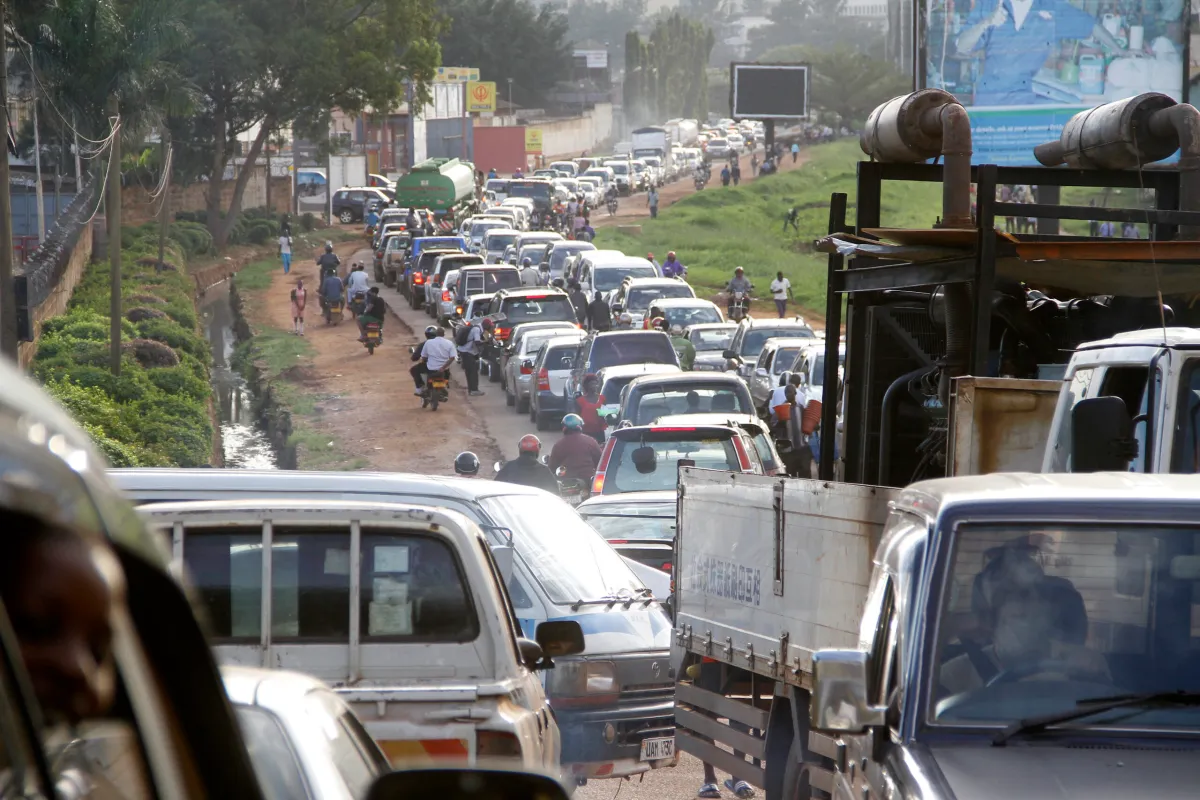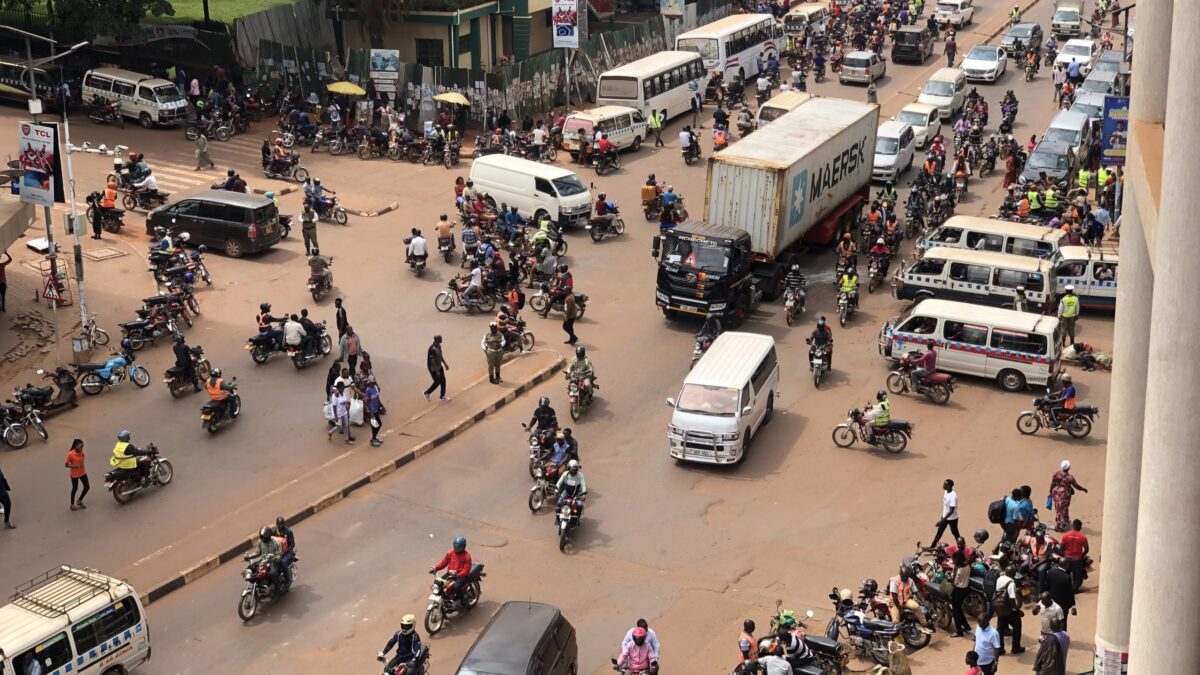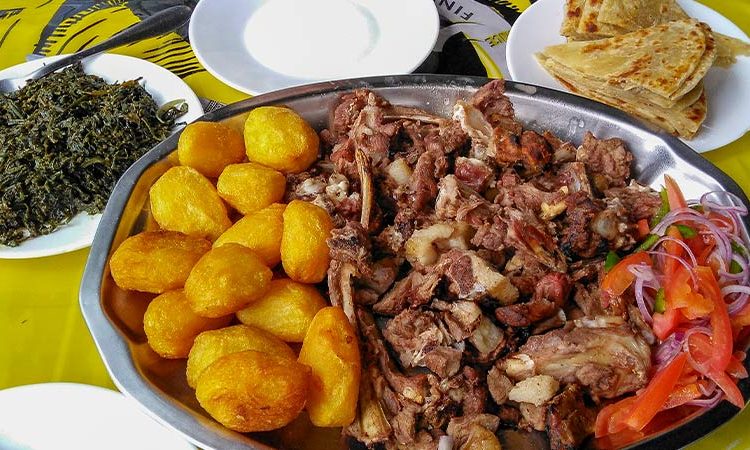- GET IN TOUCH WITH US:
- +256 753518160
- +256 777842166
- info@experiyatourcompany.com

Should I bring cash for remote areas?
November 10, 2025
What’s the best way to travel from Uganda to Rwanda?
November 10, 2025Is Kampala Traffic as Bad as People Say?
Kampala, Uganda’s bustling capital city, is a place of energy, charm, and constant motion. From the moment you enter its hilly terrain, the city greets you with a symphony of car horns, motorcycle engines, and the unmistakable rhythm of everyday life. It’s a city that never really slows down, where commerce, culture, and chaos coexist in a fascinating dance. But ask any local or visitor what stands out the most about Kampala, and chances are they’ll mention the traffic. Kampala’s traffic has earned a reputation that often precedes the city itself. But is it really as bad as people say?
To understand Kampala’s traffic, you need to look beyond the gridlock and see the living system underneath it—a mix of history, geography, and human adaptability that reflects the spirit of the city itself.
The Reality of Kampala’s Roads
Kampala is built across seven major hills, with roads weaving up and down through valleys and slopes. This topography, while scenic, has always posed a challenge for urban planning. Over the years, the city’s population has exploded, with millions commuting daily for work, trade, and school. Roads that were originally designed for a few thousand vehicles now carry hundreds of thousands.
During peak hours—typically from 7:00 to 9:30 in the morning and from 5:00 to 8:00 in the evening—traffic slows to a crawl on major routes such as Jinja Road, Entebbe Road, and Kampala Road. The roundabouts around Clock Tower, Wandegeya, and Nakawa are infamous for their congestion. The situation is often worsened by rain, road construction, or breakdowns, which can paralyze entire sections of the city.
But while the jams are undeniably real, the situation is not hopeless. In fact, understanding Kampala’s traffic is about knowing its rhythm—how it flows, when it pauses, and where to maneuver.
Why Kampala Traffic Feels Different
Kampala’s traffic doesn’t just move slowly—it moves differently. The streets are alive with a mix of vehicles: minibuses known as “taxis,” private cars, trucks, and the famous boda bodas, which are motorcycle taxis that weave skillfully through even the tightest jams. These boda bodas are both a blessing and a curse. They can get you to your destination quickly, but they also add to the unpredictability of the road.
Pedestrians, street vendors, and roadside stalls contribute to the lively atmosphere but also narrow the space for vehicles. In many areas, roads double as market corridors, especially in suburbs like Kikuubo, Bwaise, and Ndeeba. This creates a street culture where commerce, transport, and human interaction all share the same space.
Unlike in some cities where strict enforcement keeps traffic in rigid order, Kampala’s flow relies heavily on improvisation. Drivers learn to negotiate lanes without signals, pedestrians cross where they find gaps, and boda riders anticipate every movement with instinctive precision. To a first-time visitor, this might seem chaotic, but it’s a kind of organized chaos—one that somehow works.
The Human Element Behind the Wheel
One of the things that make Kampala’s traffic stand out is the human factor. The drivers here aren’t just moving from point A to B; they’re navigating life’s hustle. Taxi drivers call out for passengers, boda riders chat with customers mid-ride, and street vendors sell everything from roasted maize to phone chargers while weaving through parked cars.
There’s also a social rhythm to the roads. You’ll see spontaneous acts of courtesy, like a driver letting a pedestrian cross, or groups of people pushing a stalled car out of traffic. These small gestures reveal that beneath the noise, there’s community spirit. The traffic may be dense, but it’s humanized—full of stories and shared moments.
How Locals Cope with the Congestion
Ask any Kampala resident how they deal with traffic, and you’ll hear a mix of humor and practicality. Many plan their movements around it, leaving early or late to avoid peak hours. Some prefer to use boda bodas for flexibility, while others rely on ride-hailing apps like SafeBoda and Bolt, which offer relatively affordable and convenient options.
Businesses have also adapted. Meetings often begin with the polite disclaimer, “Sorry, the jam was too much.” Schools and offices sometimes stagger start times, and online delivery services have grown popular to save time on commutes. Even radio stations dedicate large segments to traffic updates, turning road conditions into part of the city’s daily conversation.
For travelers, the best approach is patience. Embrace the experience rather than resist it. Kampala’s traffic is a classroom of local culture—every honk, every shout, every narrow escape between vehicles tells a story about resilience and adaptation.
Infrastructure Efforts and the Future of Mobility
It’s not that the government has ignored the problem. Over the past decade, Kampala Capital City Authority (KCCA) has been working on improving road networks, constructing flyovers, and introducing traffic lights at key junctions. The new Kampala Flyover Project at Clock Tower and Nsambya, for instance, aims to ease congestion by separating city-bound and outbound traffic.
There are also ongoing efforts to expand major roads such as the Northern Bypass and the Entebbe Expressway, both of which have significantly reduced transit times for travelers heading to or from Entebbe International Airport. Plans to introduce a Bus Rapid Transit (BRT) system are underway, offering hope for a more structured and efficient public transport network.
However, urban growth continues to outpace these improvements. Kampala’s population grows each year, with more vehicles entering the city than ever before. Until mass transport becomes fully operational, the traffic will remain part of the city’s daily life.
The Beauty Amid the Chaos
While many see traffic as a nuisance, others view it as part of Kampala’s charm. There’s something undeniably authentic about watching the city come alive through the chaos of its roads. From the taxi conductors’ rhythmic calls to the laughter of street vendors and the flash of colorful clothing under the equatorial sun, Kampala’s roads are a moving theatre.
For travelers, the experience can be surprisingly enriching. You’ll see children walking to school, boda riders balancing stacks of fruit, and women carrying baskets of produce with effortless grace. The city’s pulse is felt most vividly in its streets.
And despite the slow pace, there’s always something to see. As you sit in traffic, look around—there’s history in every direction. The old colonial architecture of Nakasero, the crowded markets of Owino, the distant glimmer of Lake Victoria—all tell stories of a city that’s alive and evolving.
Navigating Kampala as a Traveler
For visitors unfamiliar with Kampala, navigating its roads can be daunting. The best strategy is to travel with local expertise. Experienced tour companies like Experiya Tour Company know how to plan routes around the city’s traffic patterns. They understand the best times to move, which shortcuts to take, and where to pause for the best views.
If you’re traveling from Entebbe Airport to a hotel in Kampala, for instance, leaving early morning or mid-afternoon can help you avoid the rush. For excursions to places like Uganda Museum, Namirembe Cathedral, or Gaddafi Mosque, a guided tour ensures you spend more time exploring than waiting in jams.
Boda bodas, though fast, require caution—always use helmets and stick to registered riders. For comfort and safety, Experiya’s private transfers or organized city tours are the best way to experience Kampala without the stress of navigating it yourself.
Is It Really That Bad?
The honest answer: yes and no. Kampala traffic can be heavy, unpredictable, and time-consuming, especially for newcomers. But it’s not unmanageable. Locals have mastered it, visitors adapt to it, and within the chaos lies a system that works in its own unique way.
What makes Kampala’s traffic bearable—even fascinating—is that it mirrors the city’s personality. It’s energetic, unpredictable, full of life, and always in motion. It’s the kind of experience that leaves an impression long after you’ve left. Once you understand it, the traffic becomes less of an obstacle and more of an immersion into Uganda’s vibrant urban heartbeat.
Travel Smart with Experiya Tour Company
If you’re planning to visit Kampala, don’t let stories about traffic deter you. The secret lies in traveling smart—with guides who know the routes, the timing, and the city’s pulse. Experiya Tour Company makes this easy. With professional drivers and local guides, they plan every journey with precision, ensuring you spend less time on the road and more time enjoying Uganda’s rich culture and attractions.
Whether you’re arriving from Entebbe, heading for a city tour, or connecting to Uganda’s national parks, Experiya offers seamless transfers, flexible scheduling, and insider tips that make your stay smooth and enjoyable. Their understanding of Kampala’s roads transforms what could be a stressful commute into a scenic adventure filled with discovery.
So, is Kampala traffic as bad as people say? It’s certainly challenging—but it’s also part of what makes this city unforgettable. With the right travel partner, you’ll experience it not as frustration, but as rhythm—the sound of a city that’s alive, dynamic, and endlessly fascinating.




